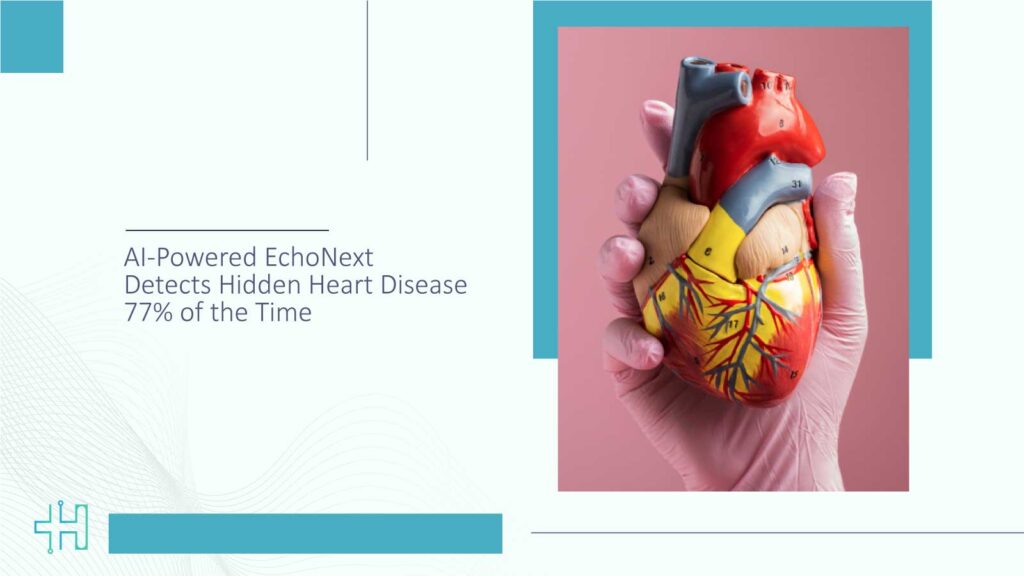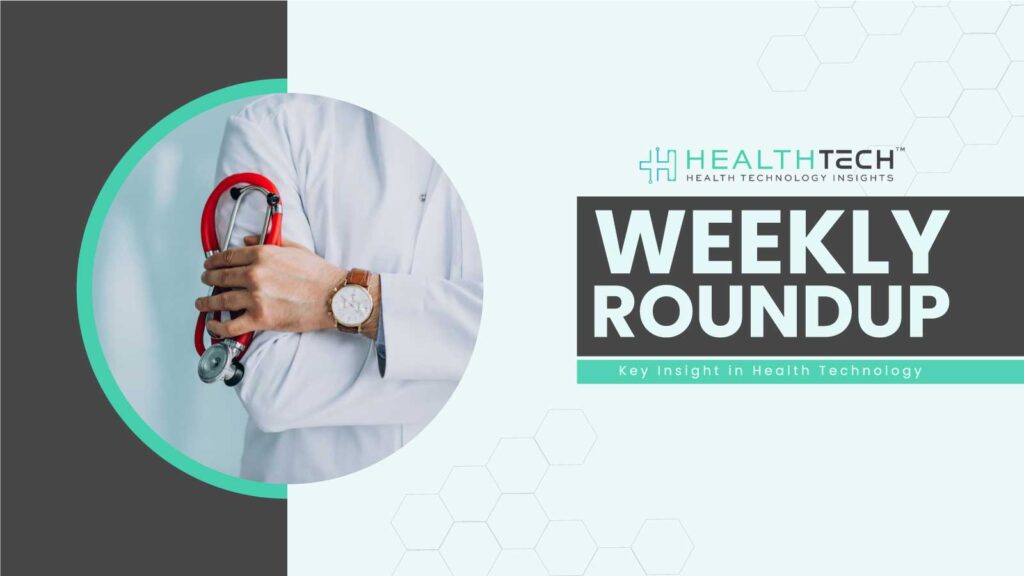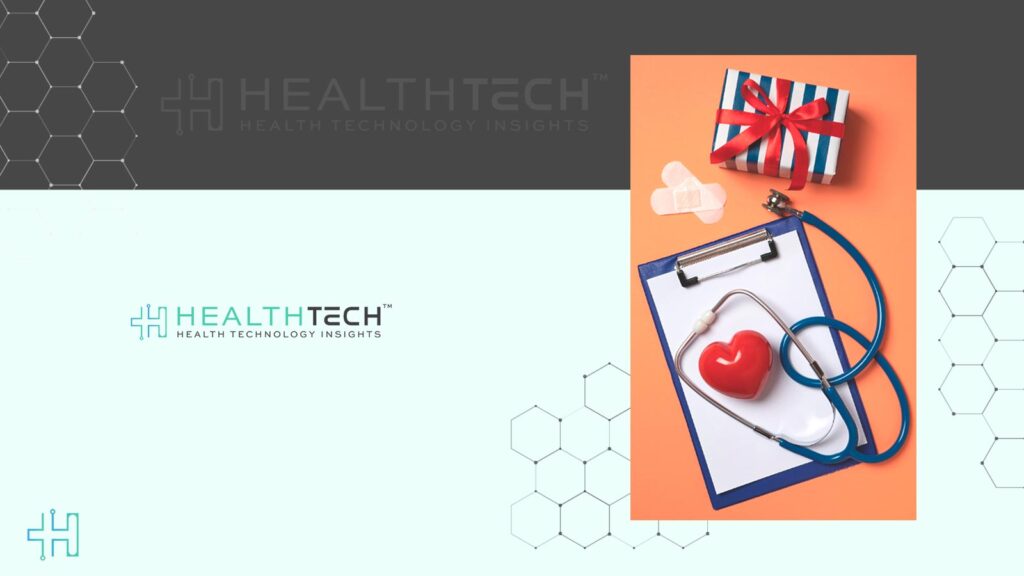Imagine a routine ECG suddenly doubling as a powerful heart‑disease detector. That vision comes true with AI‑Powered EchoNext, an innovation that detects hidden structural heart disease with 77% accuracy, even outperforming cardiologists.
In this article, we’ll explore the story behind this breakthrough, its data‑backed performance, real‑world potential, and why it matters to healthcare innovators, executives, and busy professionals. You’ll see how this tool can reshape screening norms while staying rooted in human impact.
Why EchoNext Matters for Healthtech Leaders
Healthcare costs and clinical outcomes both hinge on early detection. Structural heart disease (SHD), including valve issues, cardiomyopathies, and pulmonary hypertension, often flies under the radar until irreversible damage occurs. Echocardiograms are effective but expensive and not scalable.
Here’s where AI‑powered EchoNext changes the game. It augments low‑cost ECGs to flag high‑risk patients, empowering decision‑makers to:
- Stretch limited budgets by targeting echocardiograms where they’re needed most
- Elevate patient care by catching silent heart disease earlier
- Support clinics with no echocardiography imaging on site
Plus, EchoNext is ready for deployment in diverse settings, from urban ERs to rural outpatient clinics.
How EchoNext Works: Intelligence Meets Scale
EchoNext is a deep‑learning model trained on over 1.2 million ECG‑echo pairs from 230,000 patients spanning eight hospitals. This gives it a unique strength:
- Broad recognition: It detects multiple forms of SHD, like valve dysfunction, heart thickening, heart failure, and pulmonary hypertension, without needing condition‑specific tuning.
- High accuracy: In comparative trials with 13 cardiologists reviewing 3,200 ECGs, EchoNext scored 77% accuracy, while experts averaged 64%.
- Robust generalization: The model performs equally well across different hospitals, ethnicities, and care settings.
- Real‑world validation: Epic deployment: in nearly 85,000 patients, EchoNext flagged ~9% as high risk. Of those, 55% received echocardiograms, and nearly 75% were diagnosed with SHD.
That ability to turn routine ECGs, estimated at 400 million worldwide in 2025, into screening moments is a healthcare breakthrough.
Real‑World Stories: The Human Connection
Consider a patient attending a general check‑up: mild fatigue, no known heart issues, and an ECG is taken. EchoNext flags them for further testing. The staff orders an echo and discovers early valve disease that can be treated before it worsens.
That’s not a dramatized scenario; it’s the essence of what Dr Pierre Elias calls “using the cheaper test to figure out who needs the more expensive ultrasound”. For many patients, this is the difference between a manageable disease and critical intervention later.
Analysis: What Decision‑Makers Should Know
Before healthtech leaders consider adopting any new AI solution, the key questions are always the same: Will it work at scale? Will it deliver real-world results? And will it be worth the investment? Let’s break down what AI-Powered EchoNext offers from a decision-maker’s perspective, grounded in outcomes, efficiency, and long-term value.
Data‑Driven ROI
EchoNext improves screening positivity rates. It triaged 7,500 high‑risk individuals out of 85,000, subsequently diagnosing almost 5,600, nearly 75% yield vs standard echo yield 37% according to the New York Post.
Scalable Integration
Since ECG machines are ubiquitous across primary care, EchoNext can slot into existing infrastructure. No need for new devices, just a software layer, secure data feed, and staff workflow adaptation.
Equity And Access
The model showed consistent performance across ethnic groups and hospital types. That supports equitable deployment across communities, avoiding bias-driven disparities.
Regulatory And Validation Status
Research Publication & Patent Progress
EchoNext was published in Nature on July 16, 2025, showcasing foundational data and outcomes from its large-scale trials. A patent application is underway, laying the groundwork for future commercialization
Active Clinical Trials Underway
Current trials span eight emergency departments, testing EchoNext in live patient workflows, supporting structured validation in emergency care settings.
Not Yet FDA-Cleared
Unlike related technologies (e.g., AI-based echo analysis systems from iCardio.ai or Ultromics), EchoNext has not received FDA 510(k) clearance or Breakthrough Device designation, making regulatory status a key focus for near-future planning, well, at least not yet.
Next Steps: What Healthtech Leaders Can Do
- Pilot within connected systems – Especially in primary-care networks already generating high ECG volumes.
- Develop clinical workflows – Define risk thresholds, echo referral pathways, and alert systems.
- Monitor outcomes – Track metrics: echo yield, time to diagnosis, costs, treatment pathways.
- Plan ROI – Weigh echo costs vs improved treatment timing and reduced advanced-stage cases.
- Engage stakeholders – Educate clinicians, patients, IT, and payers to align expectations.
Future Outlook
EchoNext is a glimpse into a future where AI transforms simple tests into vital gateways for early diagnosis. As clinical trials conclude, we foresee adoption across insurance networks, health systems, and urgent care centers.
Today’s 77% accuracy is just the start: iterative training should drive sensitivity further while preserving specificity.
AI‑Powered EchoNext underscores a strategic shift: using everyday data to power vital diagnoses with minimal infrastructure changes. For healthtech decision‑makers, this means smarter resource allocation, better patient outcomes, and a foothold in proactive cardiovascular care.
Are you ready to integrate this technology and lead the next wave of AI‑driven healthcare? Future-proofing your organization begins by asking: What if every ECG could save a life?
FAQs
1. I’ve had ECGs before. What’s different when AI-Powered EchoNext is involved?
We all tend to think of ECGs as mundane. But with EchoNext, those same lines are examined by a sophisticated AI programmed to recognize subtle hints even seasoned physicians may not.
2. Does it mean they have heart disease if EchoNext indicates someone? Should they be concerned?
Not necessarily. EchoNext is like a very sharp-eyed assistant; it raises its hand and says, “Hey, this might be worth a closer look.” It doesn’t diagnose anything on its own.
3. This sounds high-tech. Is EchoNext only for big hospitals with advanced equipment?
EchoNext runs off data from standard ECGs, which are already used in clinics all over the country. Whether you’re at a rural health center or a busy city clinic, the tech doesn’t demand a big investment or new machines. It’s smart software, not bulky hardware.
4. How can we be sure this AI won’t overlook something or treat everyone equally?
What distinguishes EchoNext is the way it was trained. It was trained on more than a million actual patient files across hospitals, age ranges, and ethnic groups.
5. Why is this important to patients who are feeling fine and aren’t exhibiting symptoms?
Some things happen quietly, without theatrical symptoms, until it’s too late. EchoNext reveals those hidden problems early on. Even if a patient is feeling completely fine, this tool provides doctors with an added advantage in detecting issues before they become untreatable.
Dive deeper into the future of healthcare.
Keep reading on Health Technology Insights.
To participate in our interviews, please write to our HealthTech Media Room at sudipto@intentamplify.com




